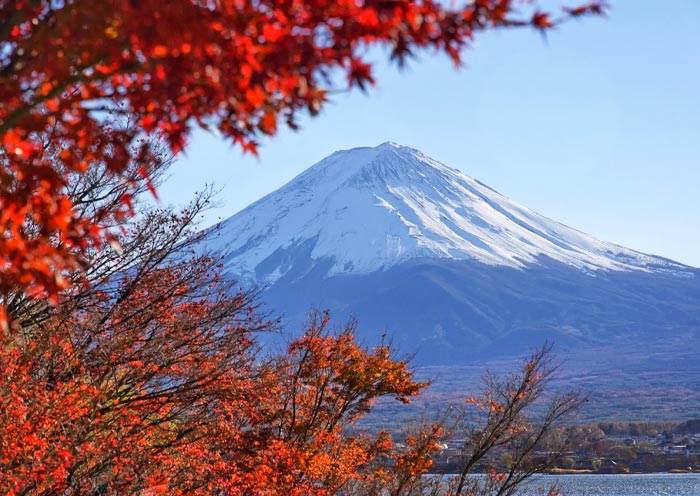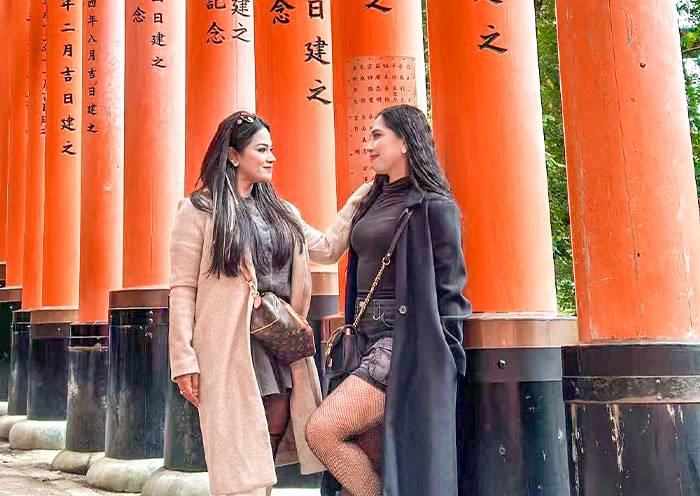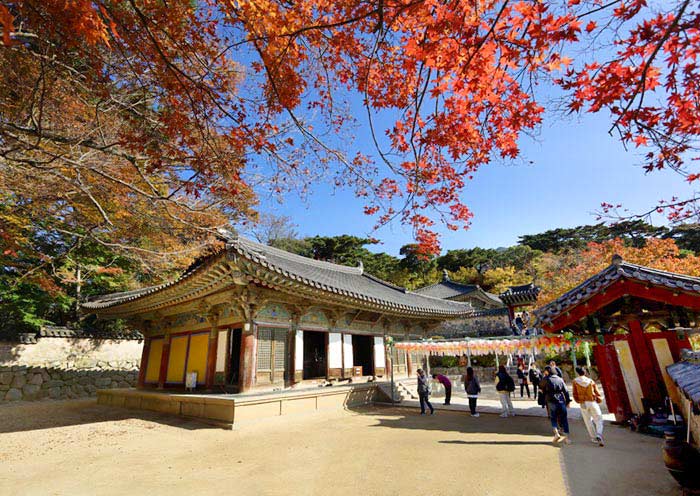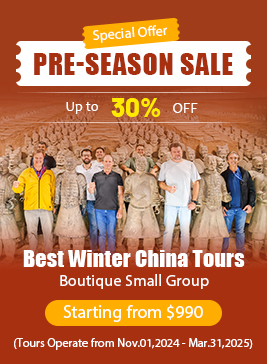Our 8 days group tour in December was amazing! Tokyo’s vibrant streets and Mount Fuji’s snow-capped beauty were breathtaking. Kyoto’s temples and Nara’s deer park offered a serene charm, while Osaka dazzled with its food and nightlife. Hiroshima’s Peace Memorial Park was deeply moving. The crisp winter atmosphere and festive illuminations added a magical touch. Traveling with a small group made the experience fun, seamless, and unforgettable!
10 Days South Korea & Japan Highlights Tour
- Highlights
- Itinerary
- Price
- Trip Notes
- Accommodation
- Photos
- Reviews
Popular Trip for South Korea and Japan in 10 Days
South Korea and Japan trip in a single itinerary? Take our 10 days South Korea and Japan tour to visit and experience the best of both South Korea and Japan - most popular destinations, top attractions, and most authentic cultures.
Start your journey in Seoul, South Korea's bustling capital. Explore iconic landmarks like Gyeongbokgung Palace, Bukchon Hanok Village, and Gwangjang Food Market. Immerse yourself in the city's vibrant culture, indulge in delicious street food, and experience the thrill of K-pop. Extend to explore DMZ area to know more history.
Then jet off to vibrant Tokyo in Japan, where modernity meets tradition. Admire the iconic Mount Fuji, a symbol of Japan's natural beauty. Immerse yourself in the ancient charm of Kyoto, home to enchanting temples and serene gardens. Explore the historic city of Nara, where friendly deer roam freely. Lastly, indulge in the vibrant energy of Osaka, a city renowned for its culinary delights and lively atmosphere.




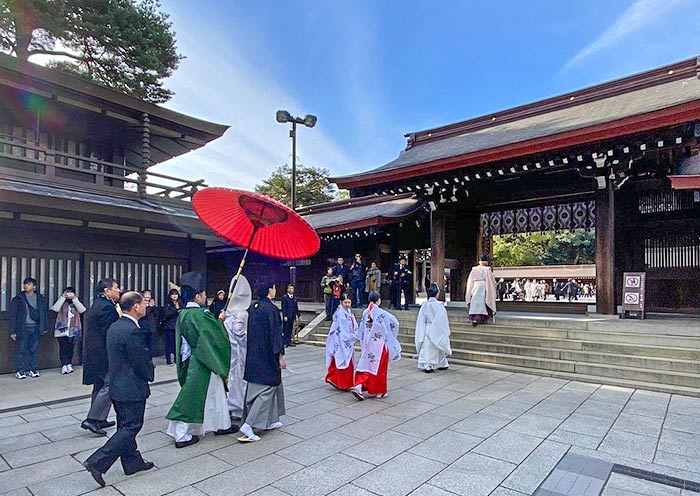
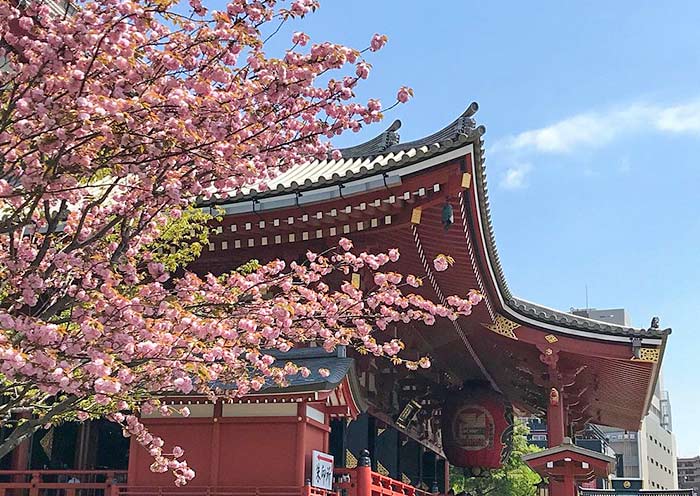
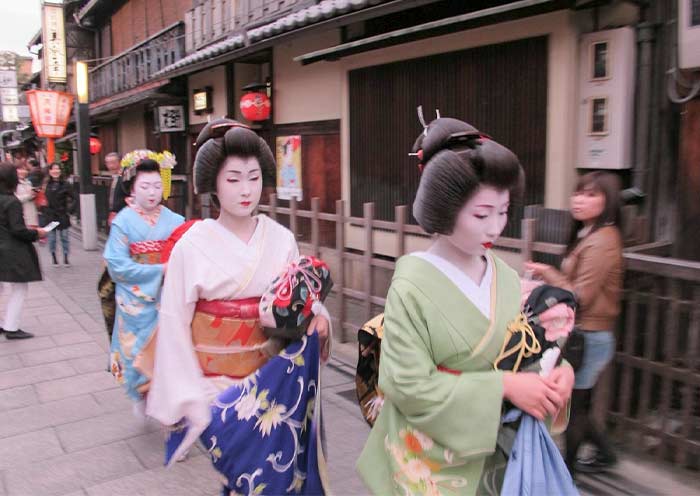

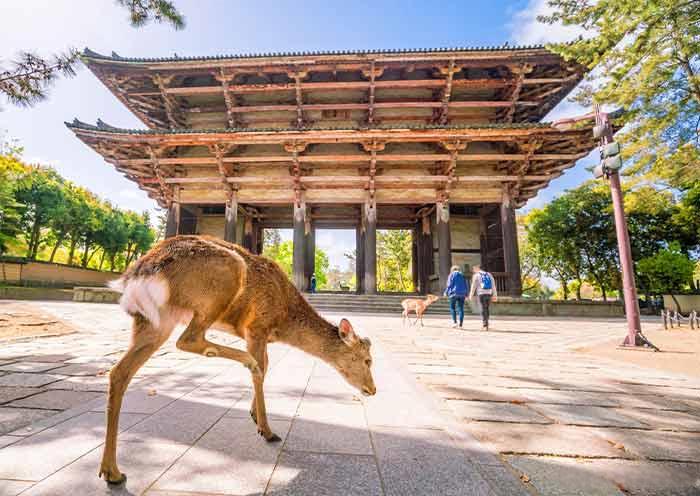
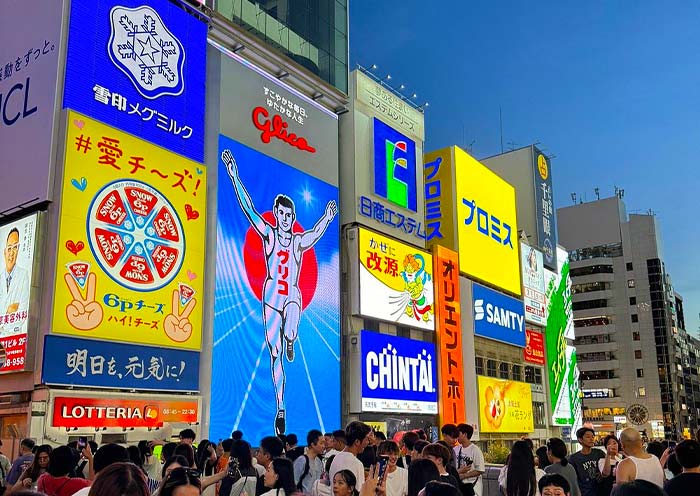
Itinerary at a Glance
Seoul (3.5 Days)
Gyeongbokgung Palace, Bukchon Hanok Village, Jogyesa Temple, Insadong Art and Antique Street, Gwangjang Food Market, Presidential Blue House (Outside View); DMZ tour (Imjingak Park, Freedom Bridge, 3rd Infiltration Tunnel, DMZ Theater and Exhibition Hall, Dora Observatory)
Tokyo (1.5 Days)
Meiji Jingu Shrine (Meiji Shrine; a Shinto Shrine), Shibuya Crossing, Senso-ji Temple (Asakusa Kannon Temple; a Buddhist temple; view Tokyo Skytree),Tsukiji Outer Market (Tsukiji Fish Market)
Mount Fuji (1 Day)
Mount Fuji 5th Station, Lake Kawaguchi, Kubota Itchiku Art Museum, Tenjo-san Park Cable Car or Lake Cruise
Kyoto (2 Days)
Tokyo to Kyoto by Shinkansen (Bullet Train), Kinkakuji Temple, Nijo Castle, Fushimi Inari Taisha Shrine, Kiyomizudera Temple, Ninenzaka & Sannenzaka, Yasaka Shrine, Gion
Nara (0.5 Day)
Todaiji Temple, Nara Park
Osaka (1.5 Days)
Shinsaibashi-suji Shopping Street
Itinerary Day by Day
안녕하세요! Welcome to Seoul, the capital of South Korea! Upon your arrival at Seoul Incheon International Airport, your driver will meet you at the exit and escort you to the hotel. Enjoy a restful night at your hotel and prepare to explore Seoul the following day.
Your adventure begins in Seoul, a sprawling metropolis located in the Han River basin. It's a city of contrasts, where ancient palaces, towering skyscrapers, and bustling markets coexist harmoniously. If you arrive early, explore this modern Asian metropolis at your own pace and discover how ancient traditions blend seamlessly with modernity in one of Asia's great cities.
Free Time Idea in Seoul (Explore on your own based on your time):
Take the Seoul Namsan Cable Car, which will transport you up to the magnificent Namsan Mountain. The cable car ride is an unforgettable experience, providing stunning views of the city below. When you reach the summit, prepare to be blown away by the panoramic view of Seoul. Get ready to ascend to new heights as we make your way to the Seoul Tower, perched atop Namsan Mountain. A true gem of Seoul, this iconic landmark will take your breath away with its stunning views of the city. Take the elevator to the top and step out onto the observation decks to witness panoramic views that will leave you in awe.
In the evening, experience the hustle and bustle of Seoul at Namdaemun Market. You can explore traditional Korean food, snacks, souvenirs, and accessories.
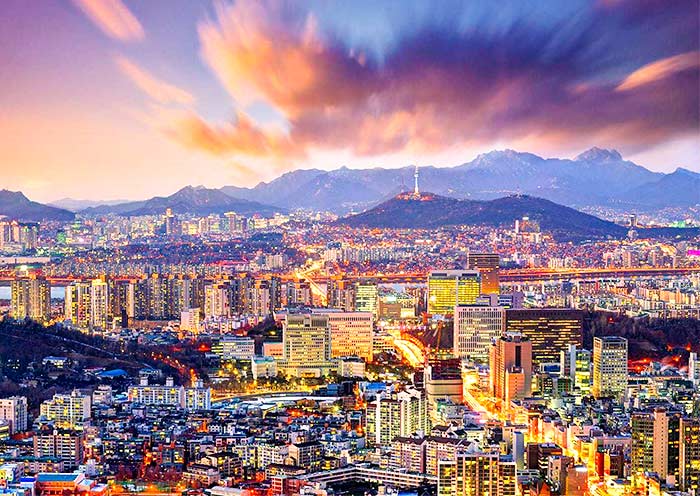

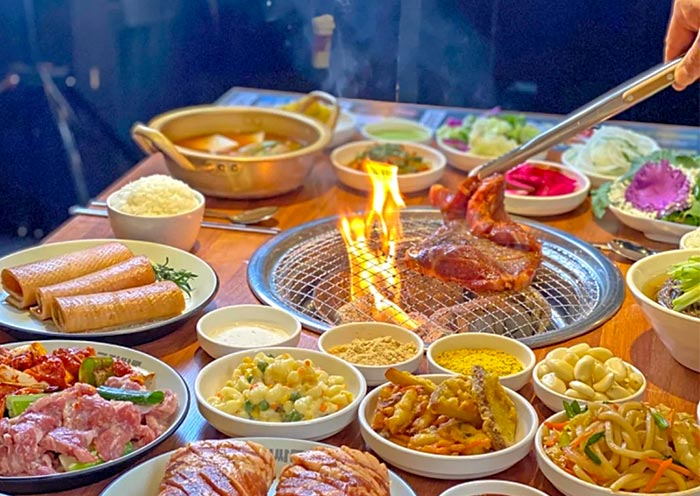
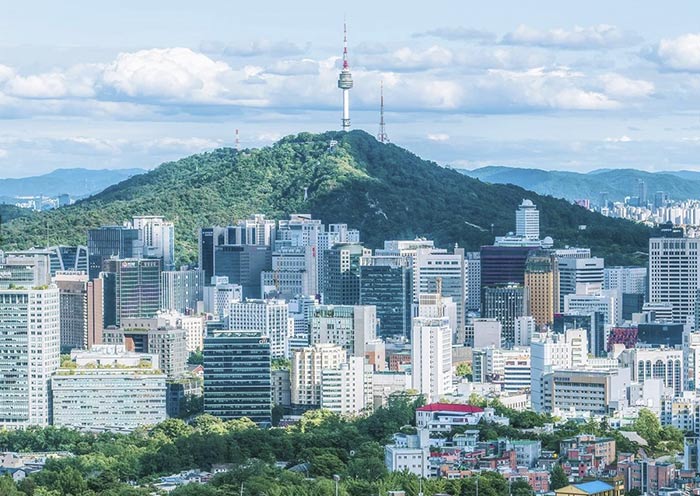
In the morning, your guide will pick you up from your hotel. Today is a highlight of your Seoul trip, featuring amazing attractions and experiences. You'll explore the grand palace, the traditional Hanok Village, and immerse yourself in the vibrant local life and culture. Plus, you'll have the chance to try typical Korean snacks.
Your first stop is the Presidential Blue House (Cheongwadae), a symbol of South Korea's political power. Take in the distinctive blue roof and modern architecture from the outside.
Next, walk to Gyeongbokgung Palace, the largest and best-preserved palace in Korea, which served as the main palace of the Joseon Dynasty. Built in 1395 by King Taejo Lee Seong-gye, this palace witnessed the rise and fall of the dynasty. Its layout is meticulous, and its architectural style is unique, representing the pinnacle of Korean architectural art. (Optional: Hanbok Rental Experience - Dress in a traditional hanbok for a journey back in time to the Joseon Dynasty. Rental fees apply on-site.) Follow the route suggested by your guide, visit Gwanghwamun, the most iconic gate, and admire the palace's architecture. Appreciate Geunjeongjeon, the heart of Gyeongbokgung Palace and symbol of the highest authority of the Joseon Dynasty. Proceed to Sajeongjeon, where grand ceremonies were held and foreign envoys were received. Explore Gyotaejeon to see the queen's living quarters. Enjoy a leisurely stroll to Hyangwonjeong, a picturesque pavilion situated on an artificial lake, offering a splendid view of the palace. (Please note: If time allows, you can take a photo with the changing of the royal guard ceremony at Gwanghwamun for a unique, historical experience. The ceremony takes place at 10:00 and 14:00, except on Tuesdays when Gyeongbokgung Palace is closed. It typically lasts about 20 minutes.)
After exploring the grand palace, let's head to enjoy the traditional Korean houses at Bukchon Hanok Village. This village is renowned for its well-preserved traditional Korean houses, known as “hanok”. Originally a residential area for the nobility and high-ranking officials of the Joseon Dynasty, Bukchon Hanok Village is characterized by its abundance of hanok. These houses feature curved roofs, wooden frames, and traditional Korean interior design. Many of the hanok have been repurposed into cultural centers, tea houses, and guesthouses, providing visitors with an opportunity to experience traditional Korean living firsthand.
Escape from the hustle and bustle, and you’ll take your time to visit Jogyesa Temple, founded in 1395. It serves as the headquarters of the Jogye Order of Korean Buddhism. At this serene and peaceful temple, you will gain a deeper understanding of Korean Buddhism and culture.
Later, get to the Insadong Art and Antique Street, which is renowned for its vibrant cultural scene and traditional Korean crafts. You’ll browse a vast array of traditional Korean art, including paintings, calligraphy, ceramics, and sculptures. And you can also catch traditional Korean performances, including traditional dance, music often held in the streets.
After that, let's dive into the bustling Gwangjang Food Market, a culinary paradise where you can savor a variety of delicious Korean street food. Indulge in popular dishes like bindaetteok (mung bean pancakes), tteokbokki (spicy rice cakes), kimbap (seaweed rice rolls), and mayak gimbap (mini rice rolls), as well as Kimchi Jeon.
After the tour, be transferred back to your hotel in Seoul.




On this day, you will go for a fascinating journey into the world's most heavily guarded border: Korea's DMZ. Venture into the heart of the DMZ, where the echoes of history and the yearning for unity reverberate.
After breakfast, depart from Seoul and embark on an immersive journey through time and conflict. Explore the hallowed grounds of Imjingak Park and feel the weight of the past as you traverse the Freedom Bridge, retracing the steps of those who sought solace and freedom.
Witness the audacious 3rd Infiltration Tunnel, a chilling testament to a divided land. Immerse in the DMZ Theater and Exhibition Hall, where tales of valor and strife paint an indelible portrait. From the Dora Observatory, glimpse the enigmatic North Korea, a realm shrouded in enigma and potential.
Then, at Dorasan Station, bask in the symbolism of hope, the last frontier before unity.
Return to Seoul, where the Yongsan War Memorial Museum awaits, a sanctuary honoring the heroes who etched their valor into the annals of time.
After getting back to Seoul, you'll go to explore Hongdae, a trendy district in Seoul, renowned for its youthful atmosphere, vibrant nightlife, and unique shopping experiences. You can browse through independent boutiques, explore cosmetic stores, or sample some of the delicious street food.
Stay overnight in Seoul.




This morning, We'll pick you up at your hotel and take you to the airport in Seoul for your flight to Tokyo.
Konnichiwa(こんにちは)!Welcome to Tokyo, the capital city of Japan! Upon your arrival at the airport in Tokyo, your driver (not English-speaking) will meet you at the exit and then escort you to the hotel. You can have a good rest in your hotel and get ready to explore Tokyo with your guide the next day.
As one of Japan and Asia's largest economic centers, Tokyo is a hub for Japanese culture and art, with numerous museums, art galleries, theaters, and cultural venues, serving as a vital platform for artistic activities and cultural exchanges. Tokyo stands as a significant base for technological advancement, nurturing numerous high-tech companies and innovative talents, holding leading positions globally in areas like electronics, automotive, and robotics technology.
Situated at the southern end of the Kanto Plain, Tokyo is surrounded by diverse natural landscapes including Mount Fuji, providing residents with leisure and outdoor activity spaces. At one point, the population of the Tokyo metropolitan area reached 36 million, accounting for one-third of Japan's total population. Despite the high cost of living, Tokyo provides residents with convenient living conditions, offering a plethora of shopping centers, entertainment facilities, and a rich culinary culture ranging from fine dining to street food.
Arrival Ideas:
Japan has two commonly used international airports. Narita International Airport, located 63.5 km from the center of Tokyo, is the primary international air hub for Tokyo, where flights from China to Tokyo usually land. Tokyo International Airport (Haneda Airport), is situated 17 km from the center of Tokyo and mainly serves domestic flights within Japan and some international flights, including flights to South Korea and other East Asian regions.
In Japan, using public transportation such as the Subway JR trains is Recommended to save costs, avoid traffic congestion, and help reduce carbon emissions. Taxi Fares in Japan are relatively high, with a starting fare of around 660 Japanese yen and 140 yen per km. Waiting time is also charged. Surcharges are applicable during nighttime and peak hours (+20%), and expressway tolls are additional. Extra fees are levied for large luggage. For instance, a taxi ride from Tokyo Tower to Narita Airport, covering about 60-70 km,might cost around 25,000-35,000 Japanese yen (roughly 170-237 USD).
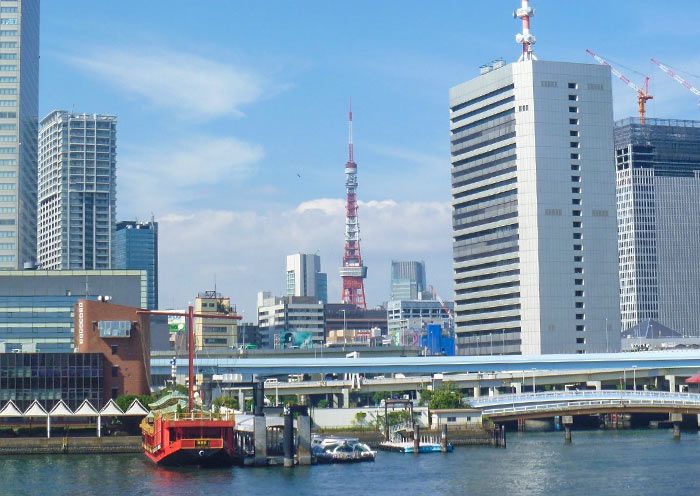
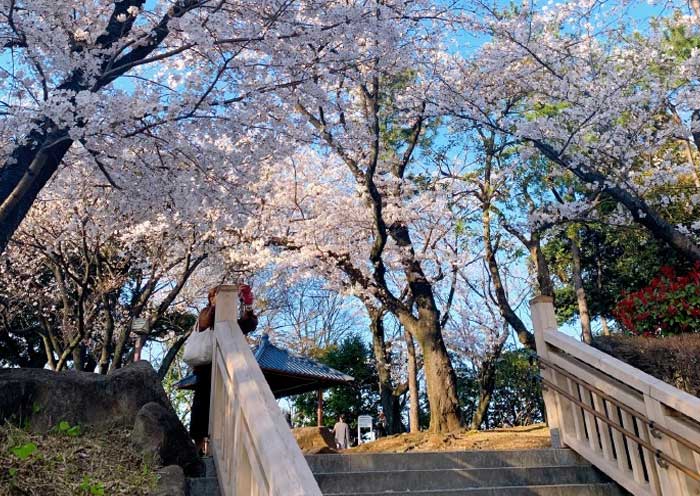
Full day explore Tokyo. You will visit Meiji Jingu Shrine (a Shinto Shrine; meet Japanese Wedding Procession), Shibuya Crossing (Hachiko, the loyal dog Statue), Senso-ji Temple (a Buddhist Temple; view Tokyo Skytree), Tsukiji Outer Market (Tsukiji Fish Market).
First to visit Meiji Jingu Shrine (Meiji Shrine), a Shinto Shrine dedicated to Emperor Meiji (1852-1912) and Empress Shoken (1849-1914), who played a crucial role in modernizing Japan while excelled in writing Waka (traditional Japanese poems of 31 syllables in the pattern 5-7-5-7-7). Meiji Shrine is a popular venue for traditional weddings, where you will have the opportunity to witness a Japanese Wedding Procession, experiencing the charm of Japanese traditional culture.
Founded in 1915 and finished in 1920, Meiji Shrine features a unique architectural style, with the main hall adopting traditional Japanese Shinto Shrine architecture infused with modern elements in its details. You will walk through Japan's Largest Wooden Torii Gate, standing in its natural wooden hue and weighing up to 13 tons. The Torii gate serves as the Symbol of Shinto Shrines, marking the transition from the worldly to the sacred. Walking through this gateway symbolizes stepping into the divine realm, evoking a profound sense of mystery and reverence.
As a peaceful oasis in the city, Meiji Jingu Shrine is the largest green space in the center of Tokyo. In the land-scarce city of Tokyo, the vast area occupied by the Meiji Shrine is truly astonishing! The sacred forest (170,000 trees) surrounding the main shrine buildings of Meiji Jingu is man-made, planted by 110,000 volunteers in honor of their beloved Emperor Meiji (established Shinto as the state religion) and Empress Shoken. The forest serves also to separate the sacred from the profane world.
Take a stroll along the paths and enjoy the fresh air and natural beauty. Then, you will notice the impressive Sake Barrel Wall along the South Approach, which features offerings from sake breweries and believers across Japan, including barrels of sake and Western liquor, reflecting Emperor Meiji's fondness for Western culture. At the main hall of Meiji Shrine, you can witness locals washing their hands and rinsing their mouths at Purification Font before worship as a sign of respect. You can offer a 5-yen coin (symbolizing a connection) like locals and pray for blessings. In the eyes of the Japanese, Meiji Shrine is considered to have such boundless capabilities, from naming ceremonies for newborns, to coming-of-age ceremonies, graduation ceremonies, seek marriage partners, pray for world peace, family well-being, safe travels, good health, warding off calamity, etc. In addition to immersing yourself in Japanese Shinto traditions and architecture, revel in the enchanting surroundings filled with lush trees, serene ponds, graceful bridges, and stone pathways that epitomize the essence of traditional Japanese garden art. You should visit here to enjoy the vibrant bloom of cherry blossoms in spring, the verdant beauty of summer, the fiery hues of autumn leaves, and the serene snowy landscapes of winter.
Tips for Visiting Meiji Jingu Shrine:
Wear modest clothing: Respect the sacred nature of the shrine by dressing appropriately.
Be mindful of noise levels: Maintain a quiet and respectful atmosphere.
Inner Garden (Optional; self-pay; once Imperial Property), and Meiji Jingu Museum (Optional; self-pay; items used by the imperial couple).
Then, move to visit Shibuya Crossing, one of the busiest intersections in the world, accommodating approximately 3,000 people per minute. As one of Tokyo's iconic locations, Shibuya attracts tourists and photographers from around the globe who come to observe and capture its essence. Numerous movies, TV shows, commercials, and music videos are filmed at this location, such as "Detective Chinatown 3" and "The Fast and the Furious: Tokyo Drift." Additionally, the well-known story of Hachiko the Loyal Dog originates here. Hachiko, an Akita dog, continued to visit the station daily to await his deceased owner's return. The Hachiko Statue located in front of Shibuya Station stands as a significant cultural landmark in the Shibuya area, attracting numerous visitors annually who come to pay their respects and honor his loyalty.
In the afternoon, head to Senso-ji Temple (Asakusa Kannon Temple), a must-visit for anyone traveling to Tokyo. Here, you can experience the heart of old Tokyo and its vibrant atmosphere. You can take photos that frame Senso-ji Temple and the Tokyo Skytree;(Japan's Tallest Tower; 634 meters) together.
Senso-ji Temple was built in 628 AD and has a history of over 1300 years, making it one of Japan's oldest temples. It not only witnesses Japan's historical changes but also carries a rich Buddhist culture. The architectural style of Senso-ji Temple blends Japanese traditional culture and art, with rich colors and exquisite carvings. The main buildings include the main gate (Kaminarimon; a landmark of Tokyo), the bell tower, the Five-story Pagoda (a landmark of Tokyo), and the main hall, all reflecting ancient Japanese architectural style and religious beliefs.
Kaminarimon is the iconic structure of Senso-ji Temple, towering at 11.7 meters high and 21.7 meters wide, truly spectacular. Giant Red Lanterns hang in front of the gate, with the words "Kaminarimon" prominently displayed. Kaminarimon is not only a symbol of Senso-ji Temple but also one of Tokyo's most famous landmarks. You may have seen the work of Utagawa Hiroshige, one of the "Three Greats of Ukiyo-e," in his piece "One Hundred Famous Views of Edo: Asakusa Kaminarimon," depicting a snowy scene of the Kaminarimon gate, celebrated for its delicate portrayal and profound imagery, becoming a masterpiece of Ukiyo-e art. The area is bustling, and crowded with people coming to pray and seek blessings for health, peace, and happiness. Around Senso-ji Temple, you can taste various Japanese cuisines, purchase unique souvenirs, and participate in various celebratory activities.
After that, you can explore Tsukiji Fish Market (Now Toyosu Market). Tsukiji Fish Market was once the world's largest fish market, famous for its tuna auctions. However, in 2018, it relocated to a new, larger facility called Toyosu Market. You can still enjoy fresh seafood (sashimi, sushi, or seafood rice bowls), purchase kitchenware, and learn about a variety of seafood, including the characteristics, cooking methods, and nutritional value of different types of seafood.
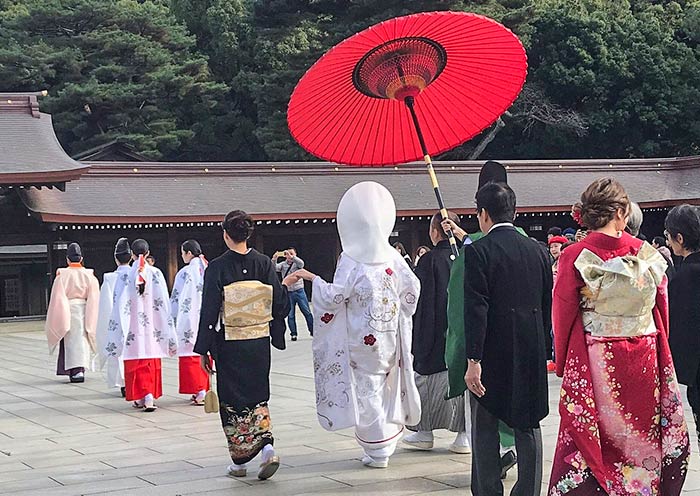
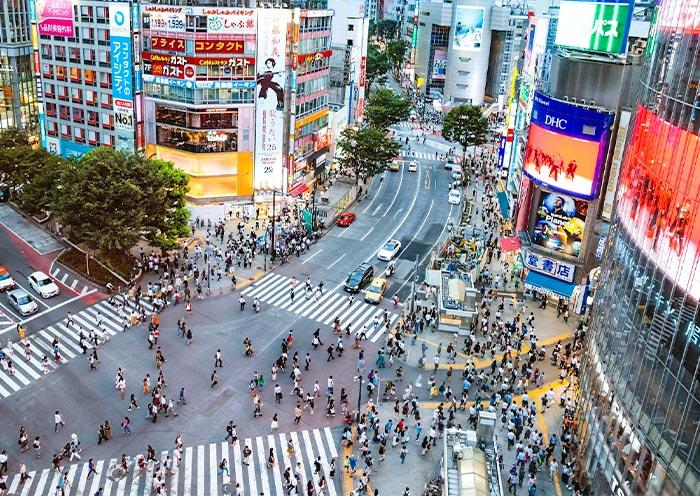
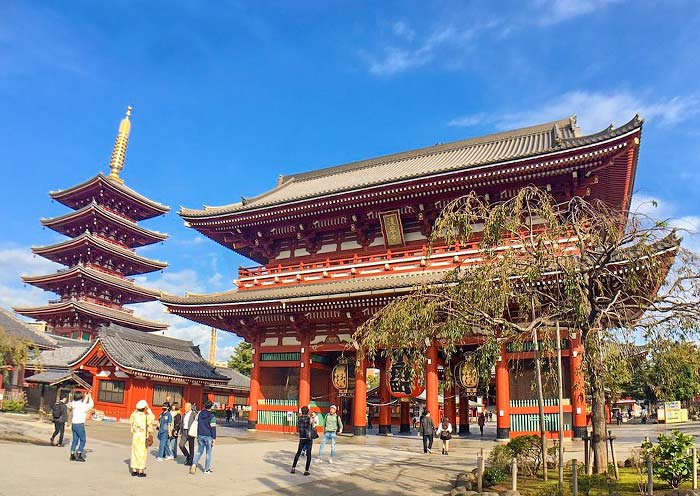
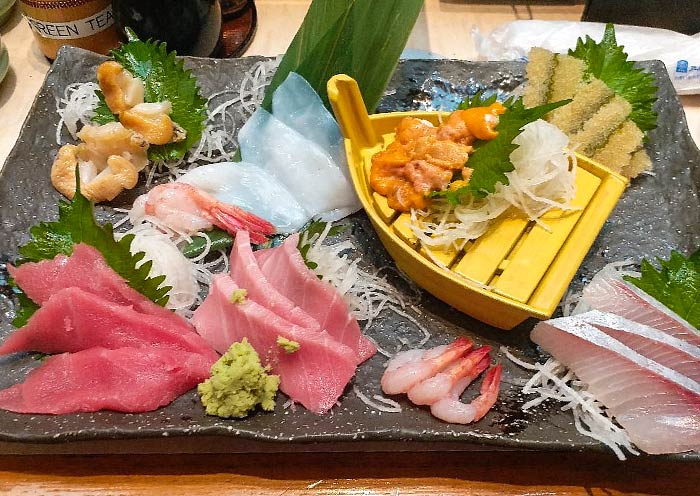
Today, it will be a full-day round trip (300 km) to admire the breathtaking views of Mount Fuji from the Mount Fuji 5th Station, Lake Kawaguchi.
Mount Fuji is the tallest mountain in Japan. It's a famous volcano with a perfectly symmetrical cone shape. Visiting Mount Fuji is essential for any traveler in Japan. As a UNESCO World Heritage Site, Mount Fuji (3,776 m) stands as an iconic symbol of Japan, a cultural and spiritual landmark (recognized as a holy mountain in Shintoism), and a natural marvel. When picturing Mount Fuji, its distinctive perfect cone shape and snow-capped peak likely come to mind. Among the most renowned depictions is Katsushika Hokusai's 'Thirty-Six Views of Mount Fuji'. Hokusai, one of the "Three Greats of Ukiyo-e," is best known for his masterpiece "The Great Wave off Kanagawa."
Start your journey to Mount Fuji 5th Station for a close-up Mount Fuji view. It offers breathtaking panoramic views of Mount Fuji (if weather permits) and the surrounding area, including the Fuji Five Lakes. For those adventurous enough, the 5th Station is the starting point for climbing Mount Fuji. Experience the unique alpine environment and the thrill of being so close to Japan's iconic mountain.
Then, head to Lake Kawaguchi for a leisurely walk along the lakeside. Lake Kawaguchi is renowned for its clear waters that often reflect the majestic Mount Fuji (if weather permits), creating a postcard-perfect scene and making it a popular destination for both domestic and international tourists.
For art lovers, the next stop is the Kubota Itchiku Art Museum, located near Lake Kawaguchi. This unique architectural space houses a collection of beautiful rare kimonos, all designed and created by artist Ichiku Kubota. Ichiku Kubota (1917–2003) was a master textile artist renowned for his exquisitely crafted kimonos. He developed his own complex dyeing techniques, creating intricate patterns and colors inspired by nature, landscapes, and traditional Japanese culture. The tranquil museum setting also offers beautiful views of Mt. Fuji and the lake.
After exploring the museum, choose between two scenic experiences: a cable car ride at Tenjo-san Park or a peaceful cruise on Lake Kawaguchi.
Tenjo-san Park (Cable Car): Take a scenic cable car ride up to the park’s observation area. From the top, you’ll be treated to a stunning 360-degree view of Mt. Fuji, Lake Kawaguchi, and the surrounding countryside.
Alternatively: Lake Kawaguchi Cruise: If you prefer a more tranquil experience, you can opt for a lake cruise on Lake Kawaguchi. This leisurely boat ride offers beautiful views of Mt. Fuji from the water, allowing you to appreciate the landscape from a different perspective.
After that, head back to Tokyo overnight and have a good rest.
Notes:
If the weather is clear, you can enjoy a good view of Mt. Fuji. However, if the weather is not favorable, Mt. Fuji may not be visible.
The best time to view Mount Fuji is generally from Nov. to Feb. when skies are clearer and the peak is snow-capped. Nevertheless, it's important to keep in mind that weather can be unpredictable, and even during these months, there is no guarantee of a clear view.
Early mornings often provide the best visibility before clouds obscure the view. Different locations around Mount Fuji offer varying perspectives, with some spots known for their clear views.
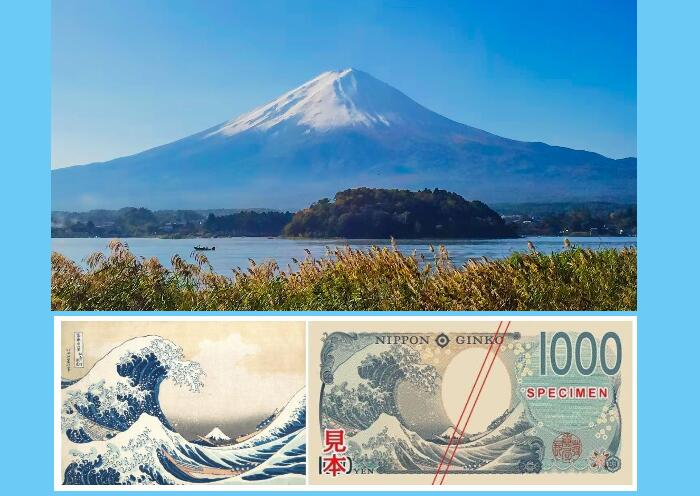

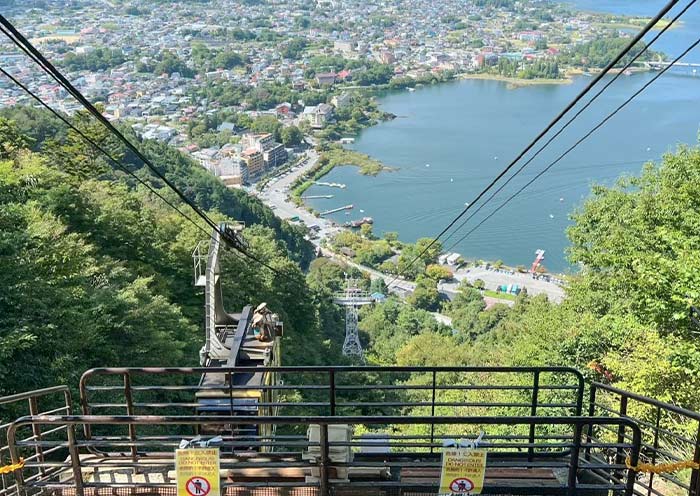
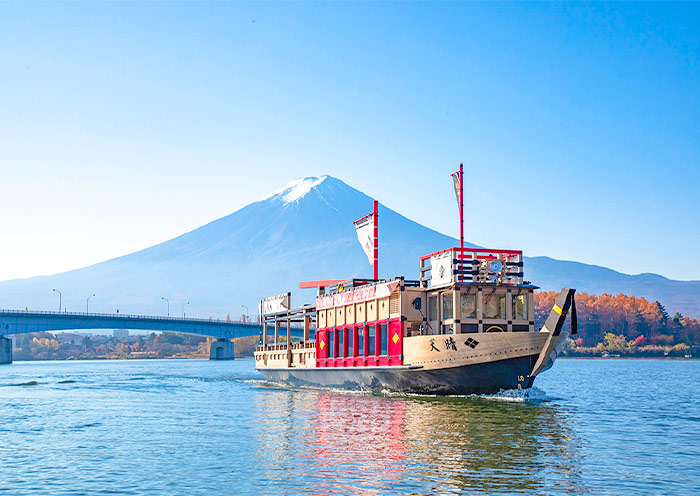
Today, you will take the Shinkansen (bullet train) to Kyoto. A driver will wait for you at the hotel entrance at the scheduled time and transport you to Tokyo Station.
Shinkansen Ride: At Tokyo Station, board the Shinkansen (bullet train) bound for Kyoto Station (about 2.5 hours). This fast and comfortable journey offers a chance to enjoy the changing landscapes of urban and rural Japan.
Upon arrival in Kyoto, a driver holding a sign will wait in the designated area to greet you and provide a private transfer to your hotel. Check into your hotel and take some time to settle in and rest.
Kyoto, located in the Kansai region of the country, was once the capital of Japan. It epitomizes ancient Japan and is famous for tranquil temples, exquisite gardens, colorful shrines, grand imperial palaces, and ornate castles. Boasting 17 UNESCO World Heritage sites, over 1,000 Buddhist temples, and more than 400 Shinto shrines, Kyoto is among the world's most culturally rich cities. It's also known for traditional Japanese arts and practices, such as tea ceremonies, kaiseki dining (a traditional multi-course meal), and ikebana (flower arranging). It remains one of the best places to see geishas, who are traditional Japanese female entertainers known for their refined skills in arts, music, dance, and conversation.
In this afternoon, visit one of Kyoto's most iconic sights, Kinkakuji Temple (Golden Pavilion) - a UNESCO World Heritage site. This Zen Buddhist temple is famous for its stunning golden exterior. The temple's stunning visual appeal comes from its top two floors, which are completely covered in gold leaf. The reflection of the golden structure shimmering in the pond in front of it, makes it perfect for photos and quiet reflection. It was originally built in 1397 as a retirement villa for Shogun Ashikaga Yoshimitsu. After Yoshimitsu's death, as per his will, the villa was converted into a Zen temple by his son.
Next, head to Nijo Castle, another UNESCO World Heritage site, to delve deeper into Japan’s feudal history. Constructed in 1603 as the Kyoto residence of Tokugawa Ieyasu, the first shogun of the Edo period, its expansive grounds and ornate architecture highlight the power and wealth of the dominant samurai clans during the Edo period (1603-1867).
The castle features two concentric rings of fortifications, each consisting of a wall and a wide moat. After passing through the grand Kara-mon (gate), you will enter Ninomaru Palace, which is divided into five buildings with numerous chambers. The interiors are adorned with masterful paintings by the Kano school, reflecting the cultural and artistic heritage of the era. The castle is renowned for its "nightingale floors," (that sing and squeak at every move, making it difficult for intruders to move about quietly), designed as a security measure against intruders. Don’t miss the excellent Ninomaru Palace Garden, which was designed by the tea master and landscape architect, Kobori Enshu.
After the tour, be transferred back to your hotel.
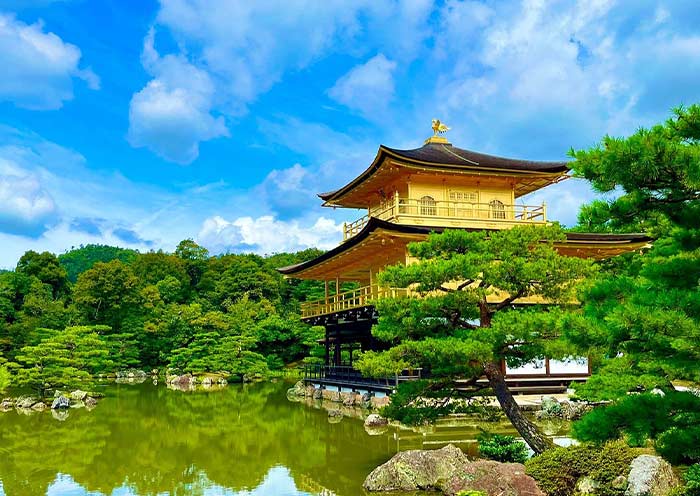

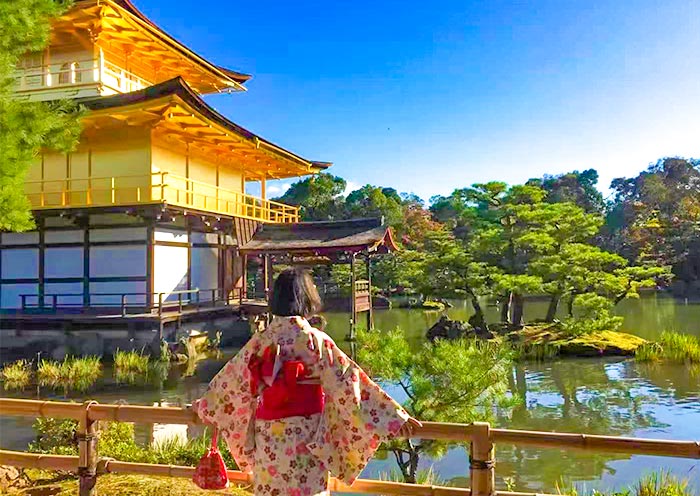

Kyoto, once the capital of Japan, epitomizes ancient Japan. Boasting 17 UNESCO World Heritage sites, over 1,000 Buddhist temples, and more than 400 Shinto shrines, Kyoto is among the world's most culturally rich cities. Known for traditional arts like tea ceremonies, kaiseki dining, and ikebana (flower arranging), Kyoto is also one of the best places to observe geishas.
Start morning in Kyoto bright and early at one of its most iconic sites - the Fushimi Inari Taisha Shrine to beat the crowds.
Fushimi Inari Taisha Shrine is famous for its thousands of vermilion torii gates, known as Senbon Torii (“thousands of torii gates”). Layers upon layers of vermilion torii gates line the lush, wooded hillside, forming a seemingly endless corridor. The vibrant orange and black gates contrast beautifully with the surrounding greenery, creating a visually stunning and almost otherworldly path that is highly photogenic.
Fushimi Inari Taisha was founded in the early 8th century (711 AD) and is primarily dedicated to Inari, the Shinto god of rice, fertility, sake, agriculture, and industry. As you explore the shrine, you will encounter hundreds of fox statues. Said to be the messengers of the god Inari, who is associated with cereal grains, these fox statues often symbolize the deity. Many of these fox statues are depicted holding a key in their mouths, which is said to open the granary.
Tips: Hiking to the summit of the mountain and back will take two to three hours, but many people go only as far as the Yotsutsuji intersection because there are fewer torii gates beyond this point. It will take 30 to 40 minutes to reach Yotsutsuji.
Next, visit Kiyomizudera Temple, a UNESCO World Heritage Site. Perched on the hillside of Eastern Kyoto, this temple is renowned for its wooden stage that juts out over the hill, providing stunning views of the city and the surrounding nature. The temple's main hall, constructed entirely without the use of nails, is an architectural marvel. Kiyomizu-dera is also celebrated for its sacred waters, which are believed to have wish-granting powers that draw countless visitors who come to drink from its stream. Don’t miss the Hondo (Main Hall), Jishu Shrine, the Otowa Waterfall, and the spiritual experience of the Tainai-Meguri room.
Tips: The scenery at Kiyomizu-dera Temple is distinctively beautiful in each season, offering a unique charm year-round. In spring, the mountains are adorned with charming cherry blossoms; in summer, they are lush with vibrant greenery; in autumn, they are decorated with brilliantly colored leaves; and in winter, they are filled with enchanting trees.
Then, walk up the well-preserved streets of Ninenzaka and Sannenzaka. These charming, sloping streets are lined with traditional shops and quaint tea houses, offering a nostalgic glimpse into Kyoto's past. As you stroll through these areas, you can shop for unique crafts, sample local snacks, and perhaps stop at a café to relax and soak in the atmosphere of old Kyoto.
Continue to Yasaka Shrine, the guardian shrine of the Gion entertainment district, which dates back over 1350 years. Yasaka Shrine is particularly favored by those seeking beauty and wealth. Visiting this significant Shinto shrine in Kyoto, you may also find yourself gaining some good luck. The shrine is most famous for its Gion Matsuri in July, during which you can witness the procession where the deities of Yasaka are paraded through the city streets.
Adjacent to the shrine, Gion is Kyoto's famous geisha district. Here, you might catch a glimpse of Geisha (Geiko) in their elaborate kimonos and traditional makeup. As you wander through the cobblestone streets of Gion, take a moment to appreciate the beautifully preserved machiya (wooden townhouses), ochaya (teahouses), and exclusive ryotei (traditional Japanese restaurants). Gion is particularly enchanting at dusk when the lanterns are lit and geishas and maiko (apprentice geishas) make their way to evening appointments, making the narrow lanes come alive.
Stay overnight in Kyoto.
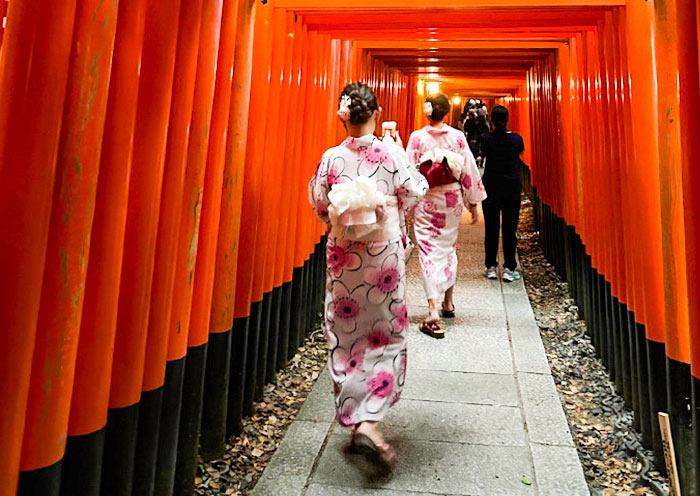

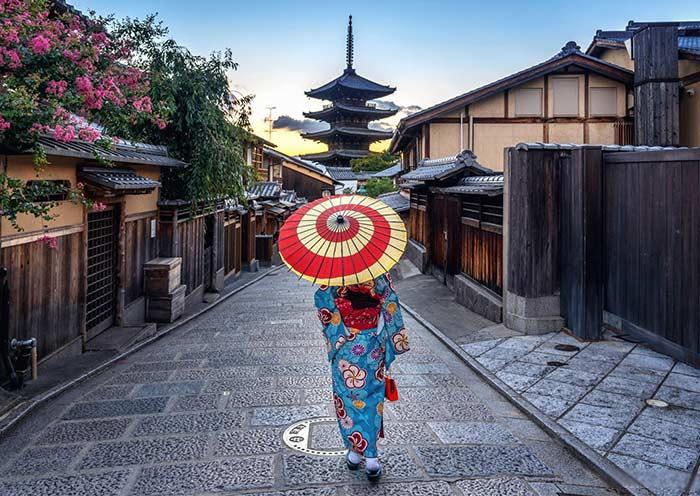

In this morning, depart from Kyoto and head to Nara, an approximately 1.5-hour car ride. Before Kyoto, there was Nara, Japan’s first permanent capital and one of the country’s most rewarding destinations. Nara boasts 8 World Cultural Heritage sites, making it Japan's second most culturally rich city after Kyoto.
Visit Todaiji Temple, one of Japan's most historically significant temples and a UNESCO World Heritage site. It is known for housing the world’s largest bronze statue of the Buddha Vairocana, which stands just over 16m high and consists of 437 tonnes of bronze and 130kg of gold. It represents Vairocana Buddha and is flanked by two Bodhisattvas. Todaiji's main hall, Daibutsu-den (Big Buddha Hall), is one of the world’ 's largest all-wood buildings, even though the present reconstruction of 1692 is only two-thirds of the original temple hall's size.
Walk to Nara Park. This park is famous for its hundreds of freely roaming deer, considered messengers of the gods in Shinto tradition. Purchase some shika senbei (deer crackers) to feed the deer as you stroll through the park.
After the tour, drive to Osaka (typically takes around 45 minutes to an hour). Osaka, Japan's third-largest city and a major economic hub, is renowned for its rich history, diverse cuisine, distinctive culture, and robust economic strength. The city's unique sense of humor and open personality make it an exceptionally interesting place, more colorful than most cities. Acres of concrete are covered with dazzling neon lights and brightly colored storefronts. Osaka is a city that loves to eat, known as the "nation's kitchen", boasting a wide variety of culinary delights.
Last, enjoy hopping at Shinsaibashi-suji Shopping Street, Osaka's busiest shopping arcade. Then, head to the lively district of Dotonbori, where waterways are lined with luminous advertisements and signs. It's especially glitzy during the holiday season, with decorations strung across the bridges. Full of fantastic restaurants, clubs, and karaoke bars, it's the city's go-to area for entertainment. Take a photo at the iconic Glico Man sign. Try takoyaki, ball-shaped octopus bites, kushikatsu (Japanese deep-fried skewered meat and vegetables), and okonomiyaki, a savory Japanese pancake topped with whatever you like.
Free Time Ideas: visit Shinsekai (New World), an old neighborhood known for its nostalgic atmosphere reminiscent of the Showa era. Tsutenkaku Tower is the iconic landmark of this district. It was inspired by cities like Paris and New York. From a modern perspective, this 100-meter-tall steel tower may not seem particularly high, yet it holds a significant place in local history as a symbol of progress and innovation. Visiting Shinsekai is like stepping back in time, offering both the charm of yesteryears and the excitement of modern urban culture.
Stay overnight in Osaka.
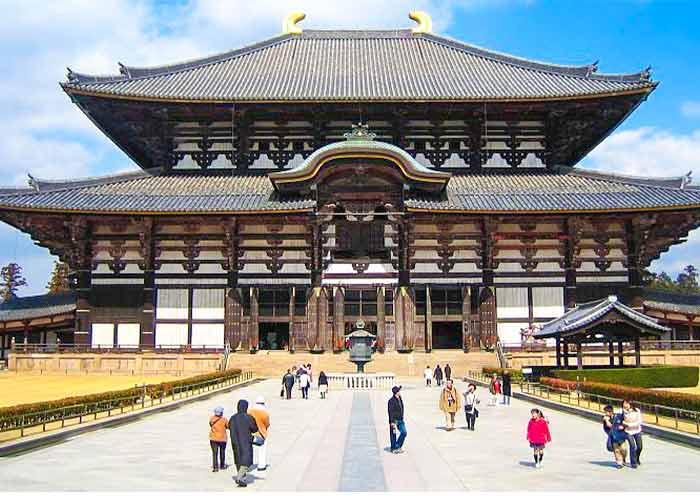
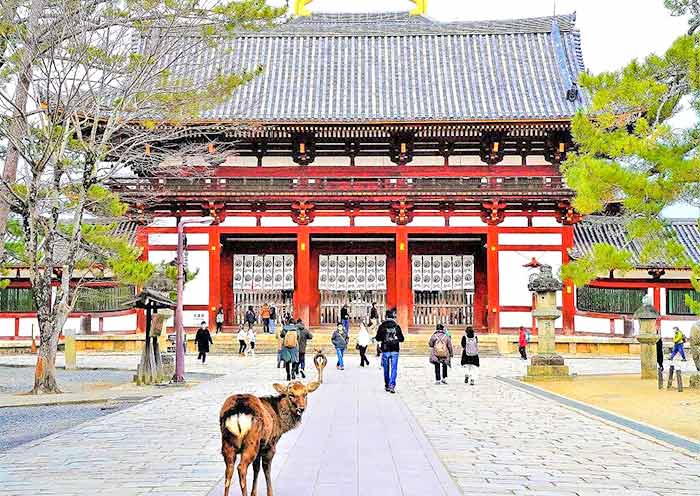
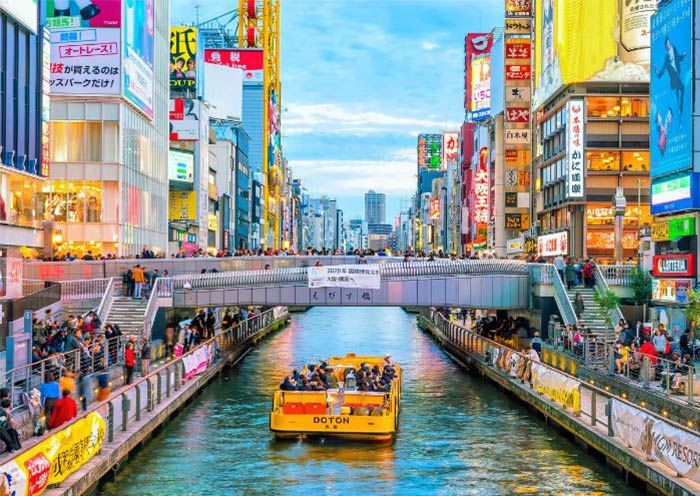

On this day, it is time to end your 10 Days South Korea & Japan Tour. You will have some free time in Japan to explore further on your own until your driver escorts you to the airport for your flight to your next destination.
Thank you for choosing Asia Odyssey Travel (AOT) for your Asia Tour. We are always here working for you and hope to see you again on your next trip to Asia. Safe journey!
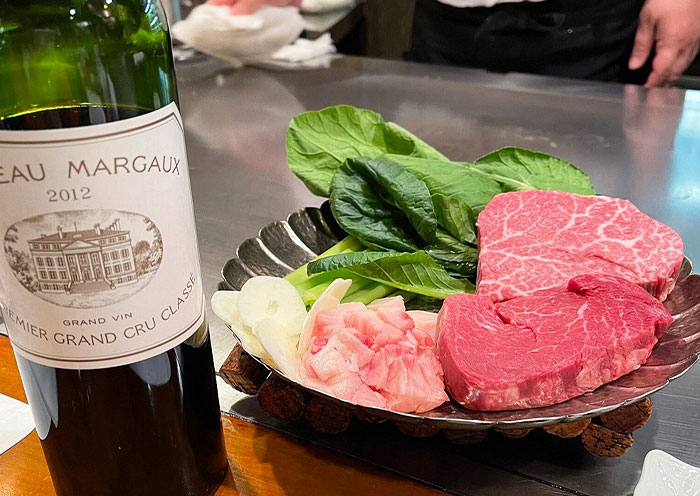

Price: What’s Included & What’s Excluded
What's Included:
What's Excluded:
Important Travel Tips for Visiting Japan
Get the right visa. Depending on your nationality and the length of your stay, you may need to apply for a visa in advance. You can do this online or at a Japanese embassy or consulate. Many countries are part of Japan’s visa exemption program, allowing their citizens to enter Japan for short stays without a visa for tourism. Always check if your country is on this list before applying for a visa. If you have any questions, feel free to contact our travel experts for more information.
The best time to visit Japan depends on your interests:
Spring (March to May): Ideal
for witnessing the cherry blossoms and enjoying mild weather. Major cities like Tokyo, Kyoto, and Hiroshima
are particularly beautiful as cherry trees bloom spectacularly.
Summer (June to
August): Perfect for experiencing vibrant festivals such as Gion Matsuri in Kyoto,
Tanabata Matsuri across the country, and enjoying the natural beauty of Hokkaido, which is less humid than
the rest of Japan. Note that early summer (June) is the rainy season.
Autumn (September to
November): Offers stunning fall foliage, making it a great time for hiking and temple
visits. The weather is cool and pleasant, ideal for outdoor activities.
Winter (December to
February): The best time for winter sports, especially in regions like Hokkaido and the
Japanese Alps. Onsens (hot springs) are also a popular attraction during the cold months.
Bring Cash. Despite advances in digital payment, many smaller vendors, temples, and rural
areas operate predominantly with cash. It’s wise to keep some yen on hand at all
times.
Universal Travel Adapter. Japan uses 100V with two straight thin
pins.
Passport: Ensure it’s valid for at least six months beyond your date
of travel.
Visa (if required): Make sure you have the right visa for your
travel.
Travel Insurance Information: Always good to have on hand.
Bow when greeting: A slight bow is a common way to say hello, thank you, or
sorry.
Be mindful of your noise level: Japanese culture values quietness,
especially in public transportation and residential areas.
Follow the rules: Whether
it's waiting in line or adhering to signage, following local rules and etiquette is highly
valued.
Etiquette in temples and shrines: Wear modest clothing and follow specific
customs such as washing hands and mouth before entering a shrine or temple. Photography might be restricted
in sacred areas.
Looking for more travel guides for first-time visitors to Japan? Want to gather additional information to plan your trip? Our team of professional travel experts has written over 40 articles about Vietnam. Please check out ourJapan Travel Guide for inspiration and detailed insights.
Hotel Conditions for Your Japan Tour
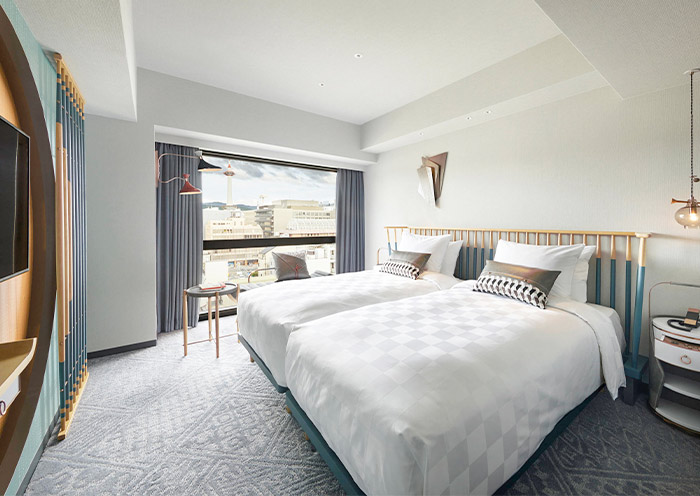

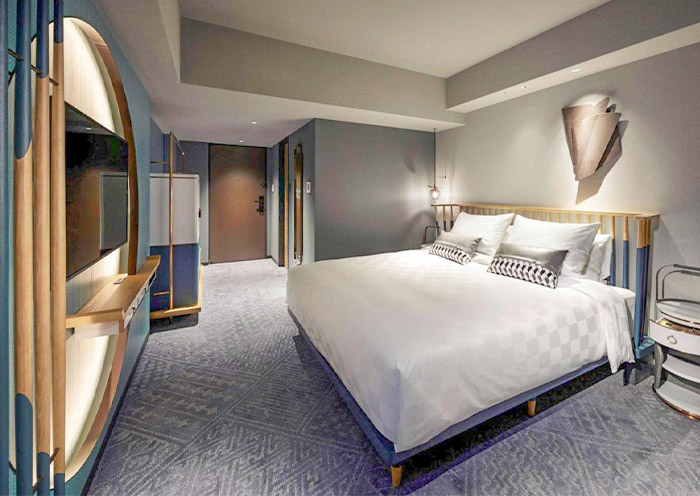

We offer a range of accommodation options to suit various preferences and budgets: luxurious 5-star hotels, comfortable 4-star hotels, and economical 3-star hotels. Our selected hotels are conveniently located close to the city center or popular tourist spots.
For those seeking a more distinctive lodging experience, we also offer Traditional Ryokans, Machiya, Onsen (hot springs) Hotels, etc. If you have specific needs or preferences, please consult with your travel advisor.
Tips: Be aware that hotel room sizes in Japan may be smaller compared to those in other developed countries due to the scarcity of land. If your budget allows, it is recommended to opt for a higher category of hotel, which will generally offer more comfort.
Photo Gallery for This Itinerary
Latest Japan Tours Reviews from Our Customers

Sam Lin
Singapore
Date of Experience: Dec 24, 2024
Tour Customized by: Vincent
You May be Interested in This Tour: 8 Days Best Japan Group Tour: Japan Highlights & Hiroshima

Zhang Xin Hua
Malaysia
Visiting Japan’s Golden Route in October was incredible! From Tokyo's vibrant city life to the serene beauty of Mount Fuji, every stop was unforgettable. Kyoto’s temples and Nara’s friendly deer captured Japan’s charm, while Osaka’s food scene was a delight. The mix of tradition and modernity made it a perfect 7-day journey!
Date of Experience: Oct 26, 2024
Tour Customized by: Allan
You May be Interested in This Tour: 7 Days Japan Golden Route Tour in Small Group

Dan Z
Washington DC
Date of Experience: Aug 24, 2024
Tour Customized by: Rex
You May be Interested in This Tour: 7 Days Japan Kansai Tour with Hiroshima: Osaka, Kyoto, Uji & Nara
Price: request
(Based on a private tour for two people. Price varies depending on program, travel date, number of people.)
Free Enquiry! You don’t need to pay for the reservation.
- United States (+1)
- Australia (+61)
- Singapore (+65)
- Malaysia (+60)
- Philippines (+63)
- Canada (+1)
- Italy (+39)
- Indonesia (+62)
- United Kingdom (+44)
- Spain (+34)
- Mexico (+52)
- Hong Kong (+852)
- Thailand (+66)
- United Arab Emirates (+971)
- New Zealand (+64)
- South Africa (+27)
- Germany (+49)
- Brazil (+55)
- India (+91)
- France (+33)
- Vietnam (+84)
- The Netherlands (+31)
- Saudi Arabia (+966)
- Ireland (+353)
- Argentina (+54)
- Switzerland (+41)
- Romania (+40)
- Pakistan (+92)
- Japan (+81)
- Portugal (+351)
- Bangladesh (+880)
- South Korea (+82)
- Puerto Rico (+1)
- Türkiye (+90)
- China (+86)
- Belgium (+32)
- Qatar (+974)
- Greece (+30)
- Taiwan (+886)
- Austria (+43)
- Poland (+48)
- Israel (+972)
- Chile (+56)
- Sri Lanka (+94)
- Nigeria (+234)
- Peru (+51)
- Colombia (+57)
- Hungary (+36)
- Nepal (+977)
- Denmark (+45)
- Bulgaria (+359)
- Norway (+47)
- Slovenia (+383)
- Sweden (+46)
- Kuwait (+965)
- Costa Rica (+506)
- Ecuador (+593)
- Venezuela (+58)
- Malta (+356)
- Croatia (+385)
- Tunisia (+216)
- Czechia (+420)
- Mongolia (+976)
- Bahrain (+973)
- Mauritius (+230)
- Papua New Guinea (+675)
- Cambodia (+855)
- Dominican Republic (+1)
- Luxembourg (+352)
- Finland (+358)
- Guatemala (+502)
- Myanmar (+95)
- Maldives (+960)
- Slovakia (+421)
- Laos (+856)
- Serbia (+381)
- Brunei (+673)
- Oman (+968)
- Macao (+853)
- Panama (+507)
- Morocco (+212)
- Jordan (+962)
- Georgia (+995)
- Fiji (+679)
- Bolivia (+591)
- Lithuania (+370)
- Bahamas (+1)
- Cyprus (+357)
- Latvia (+371)
- Bhutan (+975)
- Iraq (+964)
- Iran (+98)
- Kenya (+254)
- Jamaica (+1)
- Zimbabwe (+263)
- Azerbaijan (+994)
- Uruguay (+598)
- Estonia (+372)
- Andorra (+376)
- Cameroon (+237)
- Ghana (+233)
- Kazakhstan (+7)
- Nicaragua (+505)
- Egypt (+20)
- Russia (+7)
- Albania (+355)
- Réunion (+262)
- Montenegro (+382)
- Algeria (+213)
- Afghanistan (+93)
- Martinique (+596)
- Uganda (+256)
- Honduras (+504)
- North Macedonia (+389)
- Trinidad and Tobago (+1)
- Suriname (+597)
- Antigua and Barbuda (+1)
- Zambia (+260)
- Ukraine (+380)
- Armenia (+374)
- Barbados (+1)
- Belarus (+375)
- Palestine (+970)
- Lesotho (+266)
- Moldova (+373)
- Ethiopia (+251)
- French Polynesia (+689)
- Gambia (+220)
- Guam (+1)
- Gibraltar (+350)
- Isle of Man (+44)
- New Caledonia (+687)
- El Salvador (+503)
- Comoros (+269)
- Seychelles (+248)
- Chad (+235)
- Samoa (+685)
- Cook Islands (+682)
- Palau (+680)
- Paraguay (+595)
- DR Congo (+243)
- Solomon Islands (+677)

